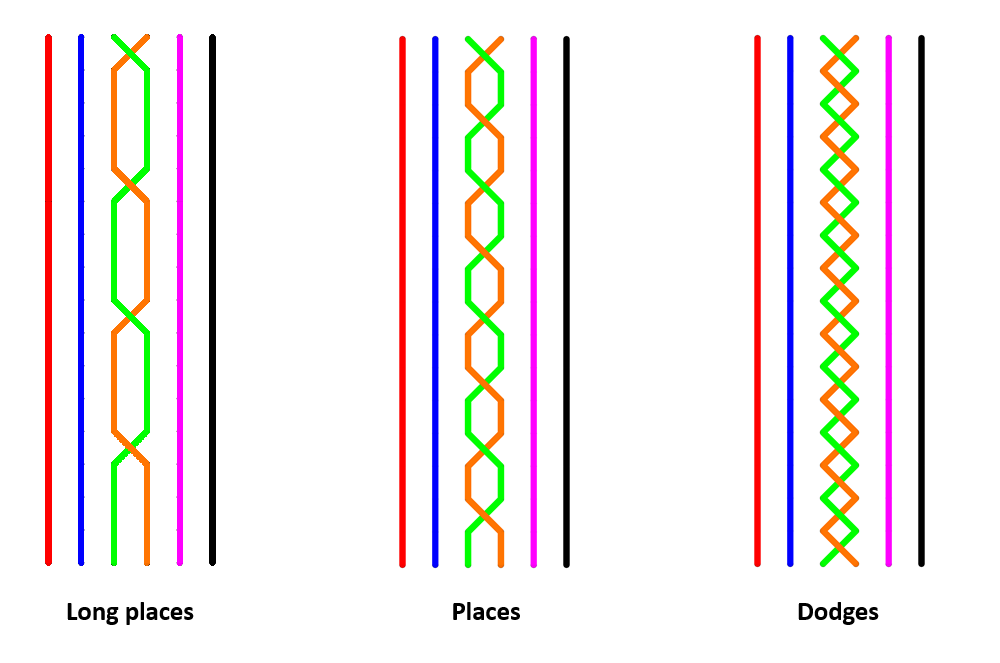Teaching Tips
2. The foundation skills
2.5. Teaching Kaleidoscope Ringing
Kaleidoscope ringing is a series of exercises made within two places. It can be started at handstroke or backstroke.
The simplest form is “long places”, 4 blows in one place. This is followed by “place making” with two blows being rung in each place and then by “dodging”. Each one demands a higher level of bell control than the previous one. They are best introduced in this order.

The aim of the exercises are:
- To refine bell control
- To refine listening skills
- To develop accurate striking and good rhythm
- To reinforce the concept of place
If new ringers are to move forward with change ringing they need to be able to hear their own bell and identify which place they are ringing in. Conventional call changes, called by asking two numbered bells to swap places, do not develop these skills.
Why Kaleidoscope Ringing?
In kaleidoscope ringing, the bells move into and out of rounds. As the sound of rounds is familiar to the ringer, any inaccuracies in the striking can be more easily identified. If the ringer is able to identify the sound of the bell in simple changes, he or she will be able to hear their bell in more complex sequences as their ringing progresses. In addition:
- Instructions are easy to follow
- Easy place identification for the ringer
- Changes can be started at back or handstroke
- Practise leading for only one whole pull at a time
- Simple introduction to following a line
- Changes of place can be memorised
- Innovation and variety to maintain and develop foundation skills
- Provides a basis for moving onto hunting on 3 bells
The basic works
- The conductor calls the bells to start on a handstroke or a backstroke
- The exercises continue until the conductor calls the bells involved to stop
- It is advised to start from rounds to begin with, with only one pair of bells working at a time
- When the striking is good, exercises can be undertaken with two or more pairs of bells involved
- When these basic manoeuvres have been mastered they can be combined to form a more advanced exercise. Different exercises can be rung at the same time in different pairs of places, not necessarily starting from rounds
Starting at backstroke is good preparation for moving the bell at backstroke when starting to learn Plain Hunt. It can also give practise at backwards leading.
Why not try this with your ringers?
In big change, little change all pairs swop for a whole pull, before returning to rounds for two blows. Then just the inside bells [2,3,4,5] swop places for a whole pull before returning to rounds. More bells are involved with the changes; the ringers have to concentrate hard to know when to move up or down a place. Ringers should be encouraged to think of the place they are ringing in, for example the 4 would be thinking 4th, 4th, 3rd ,3rd, 4th ,4th, 5th 5th, 4th 4th etc. This can be rung for service.
Resource Tips
- Kaleidoscope Ringing – A Change Ringers Alternative to Call Changes is available from the Central Council online shop.
- Images and explanations for you and your ringers are available from the Method Toolboxes.
Pip Penney
